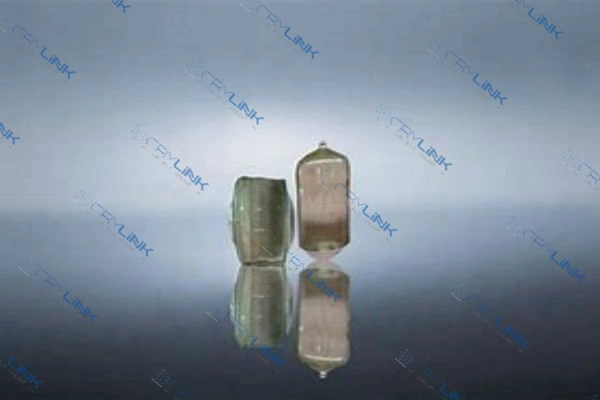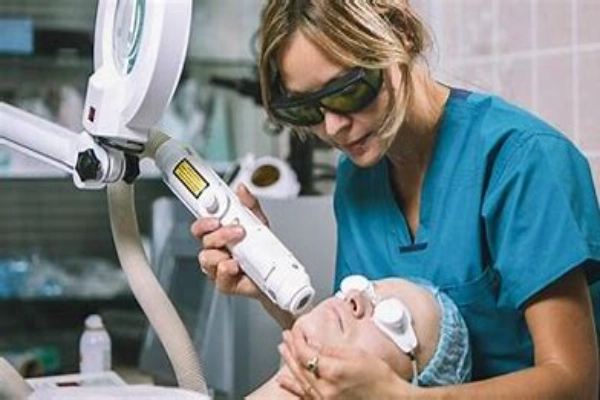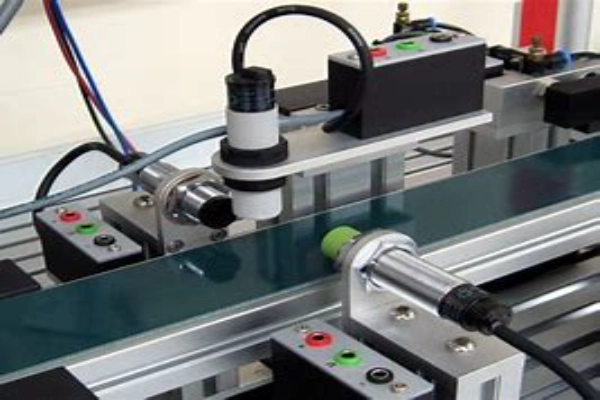Introduction
In the realm of optical technology, multifunctional optical crystal materials have emerged as a cornerstone. Among them, lithium niobate crystals stand out due to their diverse properties and applications. In this article, we will delve deep into the world of multifunctional crystals, emphasizing the versatility of lithium niobate crystals and their pivotal role in laser technology, optical communication, and sensor applications.

Understanding Multifunctional Optical Crystal Materials
Understanding multifunctional optical crystal materials is pivotal in the realm of advanced optical technology. These unique materials, known as multifunctional optical crystals, have the innate capability to manipulate light in a myriad of ways. Their intrinsic properties allow them to refract, reflect, and diffract light. This ability to control and alter light is not just fascinating from a scientific perspective but also holds immense value in real-world technological applications. From advanced communication systems to cutting-edge medical equipment, these crystals play a crucial role in driving innovation and efficiency.
One of the most noteworthy among these multifunctional optical crystals is lithium niobate (LiNbO3). This particular crystal stands out due to its ferroelectric nature, which endows it with a plethora of optical and electronic properties. Lithium niobate’s unique characteristics are not just limited to its ability to modulate light. The crystal’s wide-ranging properties make it a material of choice in various high-tech applications. For instance, its nonlinear optical properties are harnessed in devices that require the generation of new frequencies of light or the modulation of existing ones.
Furthermore, the significance of lithium niobate extends beyond its optical attributes. The crystal’s electronic properties are equally impressive. In various applications, lithium niobate serves as a bridge between optical and electronic domains, enabling the conversion of optical signals into electronic ones and vice versa. This dual nature of lithium niobate, where it seamlessly integrates the realms of optics and electronics, makes it a cornerstone in modern technology.
In conclusion, multifunctional optical crystal materials, with lithium niobate being a prime example, are reshaping the landscape of optical technology. Their ability to manipulate light, combined with their diverse range of properties, positions them as invaluable assets in the advancement of future technological innovations.

Diverse Applications of Multifunctional Crystals
The world of optics and photonics has been revolutionized by the advent of multifunctional crystals. These unique materials, with their ability to manipulate light in various ways, have found applications in a myriad of technological domains. From laser technology and optical communication to sensor applications, multifunctional crystals, particularly lithium niobate, have proven to be indispensable.
Lasers, with their coherent and intense beams of light, have transformed numerous industries, including medicine, manufacturing, and entertainment. At the heart of many advanced laser systems lie lithium niobate crystals. These crystals are renowned for their nonlinear optical properties, which are pivotal in enhancing the capabilities of lasers.
One of the most significant applications is frequency doubling. This process involves the use of lithium niobate crystals to convert a laser beam into another beam with twice the frequency, effectively halving its wavelength. This allows for the generation of coherent light in colors or wavelengths that might be challenging or inefficient to produce directly from a laser source. For instance, a laser emitting infrared light can be transformed into one emitting visible green light. Such capabilities have expanded the horizons of laser applications, from advanced medical procedures to high-resolution displays.
The digital age is characterized by the rapid transmission of vast amounts of data. Optical communication, which uses light to transmit information, has emerged as a backbone of modern communication infrastructure, offering speed and bandwidth advantages over traditional electronic communication. Multifunctional crystals, especially lithium niobate, play a pivotal role in this domain. These crystals are employed in modulators, devices that encode digital information onto light waves. Given the high-speed modulation capabilities of lithium niobate, data can be transmitted over long distances at incredible speeds, often reaching several terabits per second. This has not only made real-time global communication a reality but has also paved the way for bandwidth-intensive applications like 4K video streaming and virtual reality.

In an era where data drives decisions, sensors that can detect and quantify various parameters are of paramount importance. Lithium niobate crystals, with their piezoelectric properties, have emerged as a material of choice for many sensor applications. Piezoelectricity refers to the ability of certain materials to generate an electric charge in response to mechanical stress. When lithium niobate crystals are subjected to external forces or vibrations, they produce electrical signals. This property is harnessed in sensors to detect minute changes in environmental conditions, from seismic vibrations indicating earthquakes to subtle mechanical deformations in engineering structures. The high sensitivity and rapid response of lithium niobate-based sensors make them invaluable in applications where precision and speed are crucial.
In conclusion, multifunctional crystals, with lithium niobate at the forefront, are shaping the future of technology. Their diverse applications underscore their significance in driving innovations and enhancing the capabilities of existing technologies. As research continues and new applications emerge, the role of these crystals in advancing technology is set to grow even further.

The Future of Multifunctional Optical Crystals
The realm of optical technology is one of constant evolution and innovation. As we stand on the cusp of a new era, multifunctional optical crystals, especially lithium niobate, are poised to play an even more significant role in shaping the future. These crystals, with their unique ability to manipulate light, have already revolutionized various sectors, and as technology progresses, their importance is only set to amplify.
One of the primary drivers for the increased demand for multifunctional optical crystals is the relentless pursuit of miniaturization and efficiency. As devices become smaller, the need for compact and efficient optical components becomes paramount. Multifunctional crystals, with their ability to perform multiple optical functions within a single crystal structure, are ideal candidates for such applications. Their integration can lead to the development of more compact and efficient optical devices, from micro-lasers to integrated photonic circuits.
Moreover, the rise of quantum technology presents a plethora of opportunities for multifunctional optical crystals. Quantum communication, quantum computing, and quantum sensing are areas that are witnessing rapid advancements. Lithium niobate, with its nonlinear optical properties, is being explored for its potential in quantum information processing and quantum key distribution. As the race to build scalable and efficient quantum systems intensifies, the role of multifunctional crystals in these endeavors becomes even more critical.
Another promising avenue for these crystals is in the field of renewable energy. With the global push towards sustainable energy sources, there is a growing interest in harnessing solar energy more efficiently. Multifunctional optical crystals can be employed in advanced photovoltaic cells to manipulate sunlight in ways that enhance energy conversion efficiency. By optimizing the interaction of light with these crystals, it’s possible to extract more energy from the same amount of sunlight.
Furthermore, the healthcare sector stands to benefit immensely from advancements in multifunctional optical crystal technology. Medical imaging, diagnostics, and therapeutic applications often rely on precise optical systems. The integration of multifunctional crystals can lead to the development of more accurate and efficient medical devices. For instance, in optical coherence tomography, a non-invasive imaging technique, the use of these crystals can enhance resolution and depth of imaging, providing clinicians with better insights.
Lastly, as the world becomes more interconnected, the demand for faster and more reliable communication systems is ever-present. The next generation of communication networks, often referred to as the “Terahertz” or “6G” networks, will require advanced optical components to handle the increased data rates and bandwidth. Multifunctional optical crystals, especially lithium niobate, with their high-speed modulation capabilities, are prime candidates for facilitating this communication revolution.
In conclusion, the future of multifunctional optical crystals is bright and filled with possibilities. As technology marches forward, these crystals will be at the forefront, driving innovations and enhancing the capabilities of various systems. Their multifaceted properties not only make them indispensable in the current technological landscape but also position them as key players in the technological advancements of the future.

Conclusion
Multifunctional optical crystal materials, with lithium niobate crystals at the forefront, are shaping the future of optical technology. Their diverse applications in laser technology, optical communication, and sensors underscore their significance. As we continue to push the boundaries of optical innovations, these crystals will undoubtedly play a pivotal role in leading the way.
FAQs
- What are the primary applications of lithium niobate crystals?
- Lithium niobate crystals are primarily used in laser technology, optical communication, and sensor applications due to their unique optical and electronic properties.
- How do multifunctional optical crystals manipulate light?
- These crystals can refract, reflect, and diffract light, allowing them to manipulate light in various ways.
- Why are lithium niobate crystals preferred in optical communication?
- Their high-speed modulation capability makes them ideal for encoding information onto light waves, ensuring efficient data transmission.
- What makes lithium niobate crystals suitable for sensor applications?
- The piezoelectric properties of lithium niobate crystals enable them to convert mechanical stress into electrical signals, making them ideal for sensors.
- Are there other multifunctional optical crystals besides lithium niobate?
- Yes, there are other multifunctional optical crystals, but lithium niobate stands out due to its diverse properties and wide range of applications.

Frank
Frank graduated from the University of Shanghai for Science and Technology, majoring in optics. As a technical engineer at Crylink Company, he deeply understands crystal materials and laser components.
Related Video(s) with this Article
Related Product(s) with this Article
Related Application(s) with this Article
